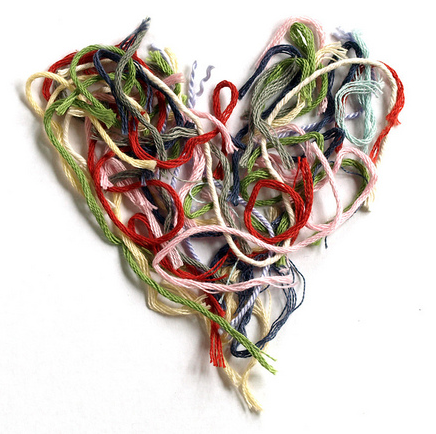FWP:
For background see S. R. Faruqi's choices. This verse is NOT one of his choices; mostly for the sake of completeness, I have added it myself. For more on Ghalib's unpublished verses, see the discussion in {4,8x}.
Well, it's not hard to see why this one didn't make it into the divan; in a ghazal with so many brilliant verses, it's definitely the runt of the litter. It feels like an assemblage of parts from two different verses, so that there's really almost no connection between the lines. It's easy to imagine a verse that would continue to develop the 'thread' and 'knot' imagery in the first line (for more on knot imagery, see {8,2}). It's also easy to imagine a verse that would make enjoyable use of the vivid idiom ;xuu;N ;xuftah , 'sleeping blood' (with thanks to Gyan Chand for explaining it)-- for example, look what Mir has done with ba;xt-e ;xuftah in M{183,13}.
But it's hard to imagine that these would be the same verse-- and sure enough, in this case they aren't.

Zamin:
In the thread of the agitation of the heart there has come to be a knot; that is, in the heart, because of weakness the strength to beat has not remained. But the construction has been a bit reversed. Instead of a knot being in the thread, into the knot there has come a thread.... In the second line the 'proof' or 'illustration' of the claim has been made: that the cause of the knot of agitation being weak is that flight is blood-dripping and broken/defeated, so that complaint is emerging only from the lips.
== Zamin, p. 400